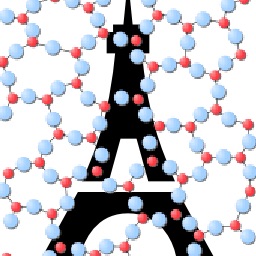Mineral Dissolution under Electric Stimulation
Although mineral dissolution and precipitation have been extensively studied, the role of electric stimulation on these processes remains unclear. We reveal the effects of subcritical electric potential (i.e., lower than the breakdown potential of water) on the bulk dissolution rates of calcite (carbonate; CaCO3) using a custom-built 3-electrode cell. The effects of applied potential depend on the pH, ionic strength, and temperature. For calcite, the enhancement in dissolution rates – under isothermal conditions – is explained by enhanced ion-transport. Thus, at acidic to near-neutral pH (pH 4-6) wherein calcite’s dissolution is mass transfer- or mixed-mode controlled, dissolution rates increase with increasing potential. But, under alkaline conditions (pH 10), wherein surface reactions limit calcite’s dissolution, its dissolution rate is unaffected by electric potential. This suggests that subcritical applied potentials do not alter the distribution of charged surface sites within the Inner Helmholtz Plane (IHP) of the electric double layer (EDL) at the mineral-solution interface. Rather, applied potential acts to enhance transport-controlled dissolution by enhancing the ion flux into, and out of the diffusion boundary layer (DBL). This results in a reduction in the activation energy of mineral dissolution in proportion to the applied potential, indicating a Butler-Volmer mechanism of dissolution stimulation. This mechanism is confirmed by comparison to orthoclase (KAlSi3O8) 0 which dissolves exclusively under surface control – whose dissolution is unaffected by applied potential. As a result, applied potentials are only effective when the mass-transfer of ions is the rate-limiting step of mineral dissolution.
